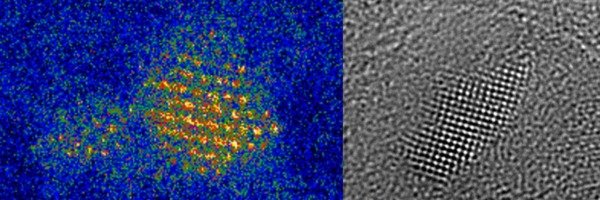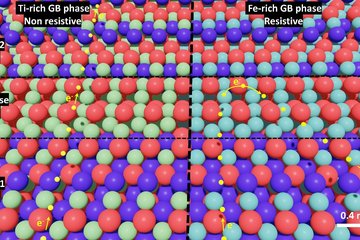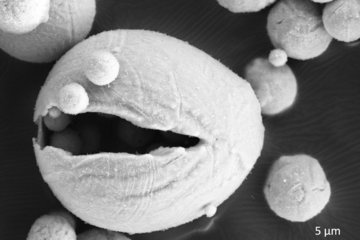
Tailoring the crystalline structure of multinary alloy nanoparticles
Complex solid solution nanoparticles (often called high-entropy alloys) are promising catalyst for various energy application. Our research is dedicated to CrMnFeCoNi complex solid solution nanoparticles which possess a high activity towards oxygen reduction reaction thanks to the interplay of multi-elements active sites. An exceptionally high activity in alkaline media was found.
The multinary CrMnFeCoNi nanoparticles are synthesized by our project partners using direct current sputtering and high-power impulse magnetron sputtering from five elemental targets or an alloy target into ionic liquids. Due to their low vapor pressure, ionic liquids (salts with a melting point < 100°C) can be used as liquid substrates in sputter processes. Furthermore, the ionic liquid itself can act as an electronic as well as a steric stabilizer preventing particle growth and particle aggregation leading to the formation of extremely small nanoparticles and with a strong effect on the structure of the formed nanoparticles.
The main focus of our work is set on the investigation of these multinary nanoparticles by using various microscopy techniques, such as Cs corrected high-resolution transmission electron microscopy (HRTEM), (scanning) transmission electron microscopy ((S)TEM) and energy dispersive X-ray spectroscopy (EDS). With these techniques the size, shape, crystallinity, defects and chemical composition of the nanoparticles are deduced. We also perform in-situ heating experiment to study the thermal stability of the nanoparticles.
Direct current sputtering of an alloy target into an ionic liquid library produces colloidal suspension of complex solid solution nanoparticles with tailored crystal structure (fcc, bcc or amorphous) and variable composition. By the selection of the ionic liquid outstanding intrinsic electrocatalytic activity towards oxygen reduction reaction can be successfully achieved. Some of these complex solid solution nanoparticles posses a higher catalytic activity than the benchmark Pt nanoparticles synthesized with the same approach. Our investigation emphasizes the strong potential of these new class of catalyst materials and provides an understanding how to modify and adapt them to the desired application.

Cs corrected high-resolution TEM images of MNPs after their (a) in-situ and (b) ex-situ crystallization or synthesis via (c) HiPIMS (d) Cs corrected high-resolution scanning TEM image of MNPs after the ex-situ crystallization.












